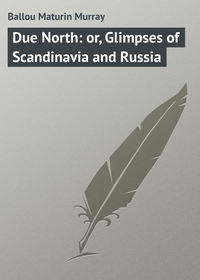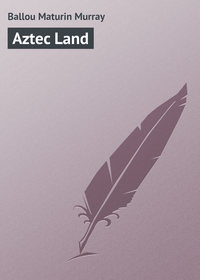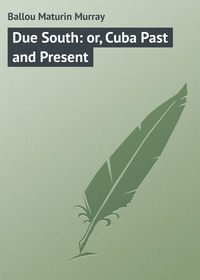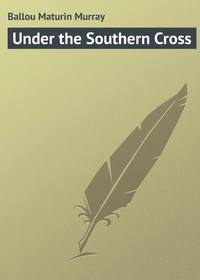 полная версия
полная версияThe New Eldorado. A Summer Journey to Alaska
There are many wild animals in the Park, such as elk, deer, antelope, big-horn sheep, foxes, buffalo, and what is called the California lion, a small but rather dangerous animal for the hunter to encounter. The buffalo is rarely seen in the West, and it is said is now only to be found wild in this Park. The streams and creeks also swarm with otter, beaver, and mink. These animals are all protected by law, visitors being only permitted to shoot such birds as they can cook and eat in their camps, together with any species of bear they may chance to fall in with; and there are several kinds of the latter animal to be found in the hills. At least this has been the case until lately; but stricter rules have been found necessary, and no visitors are now permitted to take firearms with them while remaining in the Park. The purpose of the government is to strictly preserve the game, the effect of which has already been to render the animals gathered here less shy of human approach, and to greatly increase their number.
So abundant are the evidences of grand volcanic action throughout the lake basin that it has been looked upon by scientists as the remains or centre of one enormous crater forty miles across! Dr. Hayden, the profound geologist, who was sent professionally by the government to report upon the Park, declares it to have been the former scene of volcanic activity as great as that of any part of this planet, a conclusion which the observer of to-day is quite ready to admit, inasmuch as the subsidence has yet left enough of the original forces to demonstrate the sleeping power which still lurks restlessly beneath the soil. We wonder, standing amid such remarkable surroundings, how many centuries have passed since the valley assumed its present shape. Everything is indicative of high antiquity, and it is probably rather thousands than hundreds of years since this volcanic centre was at its maximum power and activity. The valley has been partly excavated out of ancient crystalline rocks, partly out of later stratified formations, and partly from masses of lava that were poured forth during a succession of ages which make up the different epochs of the earth’s long history.
The lowest level of the Park is about six thousand feet above the sea, and the average elevation, independent of mountains, is much over this estimate. It is very properly designated as the summit of the continent, and gives rise to three of the largest rivers in North America, namely: on the north side are the sources of the Yellowstone; on the west, three of the forks of the Missouri; and on the southwest are the sources of the Snake River, which flows into the Columbia, and thence to the distant Pacific Ocean.
If possible, before leaving the neighborhood, the visitor should ascend Mount Washburn, the highest point of observation within the great reservation, a feat easily accomplished on horseback. Such an excursion is particularly desirable since all the scenery of the Park is circumscribed while we are at the level of its springs, geysers, and lakes. The grand view from this elevation will repay all the time and effort expended in its accomplishment. Its height above the base is five thousand feet, its height above the sea five thousand more. A clear day is absolutely necessary for the proper enjoyment of such an excursion, in order to bring out fairly the panorama of forests, lakes, prairies, and mountains, decked by the golden glory of the sunshine. In some directions the vision reaches a hundred and fifty miles through space. Here, on the summit of Mount Washburn, we virtually stand upon the apex of the North American continent, if we except one or two of the sky-reaching peaks of the Territory of Alaska.
As we face the north, just before us lies the valley of the Yellowstone, and in the distance, looming far above its surroundings, is the tall Emigrant Peak. To the eastward Index and Pilot peaks pierce the clouds, beyond which stretches away the Big Horn Range. In the west the summits of the Gallatin Mountains follow one another northward, while trending in the same direction, but farther towards the horizon, is the lofty Madison Range. We gaze until bewildered by peak after peak, mountain beyond mountain, range upon range, mingling with each other, all combining to form a glorious view embodying the indescribably grand characteristics of the Rocky Mountain system, the equal of which we may never again behold.
The tall range of mountains which girdle the Park are snow-covered all the year round, frigid, giant sentinels, which long proved a complete barrier to organized exploration, forming an amphitheatre of sublime and lonely scenery. The story of the discovery of this Wonderland is briefly told as follows: It seems that a gold-seeking prospector named Coulter made his way with infinite perseverance into the region in 1807, and after many hair-breadth escapes from Indians, wild beasts, poisonous waters, and starvation, finally succeeded in rejoining his comrades, whom he entertained with stories of what he had seen, which seemed to them so incredible that they believed him to be crazy. Afterwards, first one and then another adventurer found his way hither, and though each of them corroborated Coulter’s story, they were by no means fully credited. But public attention and curiosity were thus aroused, leading the government to send Professor Hayden and a small exploring party to carefully examine the region. This enterprise not only corroborated the stories already made public, but greatly added to their volume and amazing detail.
It was found that the representations of Coulter and those who followed him, so far from exaggerating the wonders of the Yellowstone, in reality fell far below the truth.
During the year 1870 Governor Washburn, accompanied by a small body of United States cavalry, entered the Park by the valley of the Yellowstone, and thoroughly explored the cañons, the shores of the great lake, and the geyser region of Firehole River, together with the various interesting localities of which we have spoken. On returning he declared that the party had seen the greatest marvels to be found upon this continent, and that there was no other spot on the globe where there were crowded together so many natural wonders, combined with so much beauty and grandeur.
Finally Congress, foreseeing that the greed of speculators would lead them to monopolize this Wonderland for mercenary purposes, promptly took action in the matter, setting the region aside as a National Park and Reservation, for the benefit of the people at large forever, retaining the fee and control of the same in the name of the government.
Not many persons have ever attempted to traverse the Park in the winter season, but it has been done by a few hardy and adventurous people, who nearly perished in the attempt. Such individuals have reported that the raging snow-storms and blizzards which they encountered were on a scale quite equal to the other demonstrations and natural curiosities of the place. The trees in their neighborhood were beautifully gemmed with the frozen vapor of the geysers, and the heated springs seemed doubly active by the contrast between their temperature and that of the freezing atmosphere. It was only by camping at night upon the very brink of these boiling waters that life could be sustained, with the atmosphere at forty degrees below zero.
One who comes hither with preconceived ideas of the peculiar sights to be met with is sure to be disappointed, not in their want of strangeness, for the Park is overstocked with curiosities having no counterpart elsewhere, but the features are so thoroughly unique that his anticipations are transcended both in the quality and the quantity of the food for wonder which is spread out before him on every side.
CHAPTER V
Westward Journey resumed. – Queen City of the Mountains. – Crossing the Rockies. – Butte City, the Great Mining Centre. – Montana. – The Red Men. – About the Aborigines. – The Cowboys of the West. – A Successful Hunter. – Emigrant Teams on the Prairies. – Immense Forests. – Puget Sound. – The Famous Stampede Tunnel. – Immigration.
After a delightful, though brief, sojourn of ten days in the Yellowstone Park, realizing that twice that length of time might be profitably spent therein, we returned to Livingston, where the Northern Pacific Railroad was once more reached, and the westward journey promptly resumed. The Belt Range of mountains is soon crossed, at an elevation of over five thousand five hundred feet. A remarkable tunnel is also passed through, three thousand six hundred feet in length, from which the train emerges into a grand cañon, and soon arrives at the city of Bozeman. This place has a thrifty and intelligent population of over five thousand, and is notable for its rural and picturesque surroundings, in the fertile Gallatin Valley, which is encircled by majestic ranges of mountains, shrouded in “white, cold, virgin snow.” Having passed the point where the Madison and Jefferson rivers unite to form the headwaters of that great river, the Missouri, whence it starts upon its long and winding course of over four thousand miles towards the Mexican Gulf, we arrive presently at Helena, the interesting capital of Montana. This is called the “Queen City of the Mountains,” and is famous as a great and successful mining centre, the present population of which is about twenty thousand. It is said to be the richest city of its size in the United States, an assertion which we have good reasons for believing to be correct. The vast mineral region surrounding Helena is unsurpassed anywhere for the number and richness of its gold and silver-bearing lodes, having within an area of twenty-five miles over three thousand such natural deposits, the ownership of which is duly recorded, and many of which are being profitably worked. The city is lighted by a system of electric lamps, and has an excellent water-supply from inexhaustible mountain streams.
We were told an authentic story illustrating the richness of the soil in and about Helena, as a gold-bearing earth, which we repeat in brief.
It seems that a resident was digging a cellar on which to place a foundation for a new dwelling house, when a passing stranger asked permission to remove the pile of earth that was being thrown out of the excavation, agreeing to return one half of whatever value he could get from the same, after washing and submitting it to the usual treatment by which gold is extracted. Permission was granted, and the earth was soon removed. The citizen thought no more about the matter. After a couple of weeks, however, the stranger returned and handed the proprietor of the ground thirteen hundred dollars as his half of the proceeds realized from the dirt casually thrown out upon the roadway in digging his cellar.
Between Helena and Garrison the main range of the Rocky Mountains is crossed, and at an elevation of five thousand five hundred and forty feet the cars enter what is called the Mullan Tunnel. This dismal and remarkable excavation is nearly four thousand feet long. From it the western-bound traveler finally emerges on the Pacific slope, passing through the beautiful valley of the Little Blackfoot.
The region through which we were traveling stretches from Lake Superior to Puget Sound, on the Pacific coast, and spreads out for many miles on either side of the Northern Pacific Railroad, known as the “Northern Pacific Country.” No portion of the United Sates offers more favorable opportunities for settlement, and in no other section is there as much desirable government land still open to preëmption, presenting such a variety of surface, richness of soil, and wealth of natural productions. Intelligent emigrants are rapidly appropriating the land of this very attractive region, but there is still enough and to spare. Europe may continue to send us her surplus population for fifty years to come at the same rate she has done for the past half century, and there will still be room enough in the great West and Northwest to accommodate them.
As we left the main track of the Northern Pacific Railroad at Livingston to visit the Yellowstone Park, so at Garrison we again take a branch road to Butte City, situated fifty-five miles southward, and which is admitted to be the greatest mining city of the American continent. Here, on the western slope of the main range of the Rocky Mountains, stands the “Silver City,” as it is generally called, though one of its main features is its copper product, which rivals that of the Lake Superior district in quantity and quality, giving employment to the most extensive smelting works in the world. There are thirty thousand inhabitants in Butte, and it is rapidly growing in territory and population. Its citizens seem to be far above the average of our frontier settlers in intelligence and thrift. The Blue Bird silver mine is perhaps the richest in this locality, yielding every twelve months a million and a half of dollars in bullion; while the Moulton, Alice, and Lexington mines each produce a million dollars or more in silver yearly. There are several other rich mines, among them the Anaconda copper mine, which gives an aggregate each year larger in value than any we have named. The Parrott Copper Company, also the Montana and Boston Copper Company, each show an annual output of metal valued at a million of dollars. In place of there being any falling off in these large amounts, all of the mines are increasing their productiveness monthly by means of improved processes and enlarged mechanical facilities. But we have gone sufficiently into detail to prove the assertion already made, that Butte City is the greatest mining town on the continent. Eight tenths of its population is connected, either directly or indirectly, with mining.
“It would seem that the United States form the richest mineral country on the globe,” said an English fellow-traveler to whom these facts were being explained by an intelligent resident.
“That has long been admitted,” said the American.
“And what country comes next?” asked the Englishman.
“Australia,” was the reply. “But the United States,” continued the American, “have another and superior source of wealth exceeding that of all other lands, namely, their agricultural capacity. There are here millions upon millions of acres, richer than the valley of the Nile, which are still virgin soil untouched by the plow or harrow.”
Not mining, but agriculture forms the great and lasting wealth of our broad and fertile Western States, rich though they be in mineral deposits, especially of gold and silver.
Before proceeding further on our journey, let us pause for a moment to consider the magnitude of this imperial State of Montana, which measures over five hundred miles from east to west, and which is three hundred miles from north to south, containing one hundred and forty-four thousand square miles. This makes it larger in surface than the States of New Hampshire, Vermont, Massachusetts, Connecticut, New Jersey, Maryland, Ohio, and Indiana combined. With its vast stores of mineral wealth and many other advantages, who will venture to predict its future possibilities? It would be difficult to exaggerate them. The precious metals mined in the State during the last year gave a total value of over forty million of dollars, which was an increase of six million over that of the preceding year. Between forty and fifty million dollars in value is anticipated as the result of the local mining enterprise for the current twelve months, and yet we consider this to be the second, not the first, interest of Montana; agriculture take the precedence.
Returning to Garrison, after a couple of days passed at Butte City examining its extremely interesting system of mining for the precious metals, we once more resume our western journey.
Along the less populous portions of the route groups of dirty, but picturesque looking Indians are seen lounging about, wrapped in fiery red blankets. These belong to various native tribes, such as the Sioux, Blackfeet, Cheyennes, and Arapahoes. Bucks, squaws, and papooses gather about the small railroad stations, partly from curiosity, and partly because they have nothing else to do; but they are ever ready to sell trifles of their own rude manufacture to travelers as souvenirs, also gladly receiving donations of tobacco or small silver coins. The men are fat, lazy, and useless, scorning even the semblance of working for a livelihood, leaving the squaws to do the trading with travelers. These are “wards” of our government, who receive regular annuities of money and subsistence, including flour, beef, blankets, and so on. Support is thus insured to them so long as they live, and no American Indian was ever known to work for himself, or any one else, unless driven to it by absolute necessity.
When the author first crossed these plains, nearly thirty years ago, before there was any transcontinental railroad, the Indian tribes were very different people from what we find them to-day. The men were thin in flesh, wiry, active, and constantly on the alert. They were ever ready for bloodshed and robbery when they could be perpetrated without much danger to themselves. Contact with civilization has changed all this. They have become fat and lazy. They have borrowed the white man’s vices, but have ignored his virtues. When not fighting with the pale faces, the tribes were, thirty and forty years ago, incessantly at war with each other, thus actively promoting the fate which surely awaited them as a people. Their pride, even to-day, is to display at their belts not only the scalps of white men and women taken in belligerent times, but also the scalps of hostile tribes of their own race.
We believe most sincerely in fulfilling all treaty obligations between our government and the Indians, to the very letter of the contract, nor have we any doubt that our official agents have often been unfaithful in the performance of their duties; but when we attempt to create saints and martyrs out of the Red Men, we are certainty forcing the canonizing principle. They are entitled to as much consideration as the whites, but they are not entitled to more. They are crafty and cruel by nature; this is, perhaps, not their fault, but it is their misfortune. Nothing is really gained in our fine-spun moral theories by attempting to deceive ourselves or others. The plain truth is the best.
A little way from the railroad station on the open prairie the camps of these aborigines may often be seen, consisting of a few rude buffalo hides or canvas tents, while a score of rough looking ponies are grazing hard by, tethered to stakes driven into the soil. Here and there in front of a tent an iron kettle, in which a savory compound of meat and vegetables is simmering, hangs upon a tripod above a low fire built on the ground, presided over by some ancient squaw, all very much like a gypsy camp by the roadside in far off Granada.
The male aborigines wear semi-civilized clothing made of dressed deerskins, and woolen goods indiscriminately mixed; their long coarse black hair, decked with eagle’s feathers, hangs about their necks and faces, the latter often smeared with yellow ochre. Now and then a touch of manliness is seen in the bearing and facial expression of the bucks; but the larger number are debauched and degraded specimens of humanity, who impress the stranger with some curiosity, but with very little interest. Like the gypsies of Spain, they are incorrigible nomads, detesting the ordinary conventionalities of civilized life. The Indian women are clad in leather leggings, blue woolen skirts and waists, having striped blankets gathered loosely over their shoulders. No one can truthfully ascribe the virtue of cleanliness to these squaws. The papooses are strapped in flat baskets to the mothers’ backs, being swathed, arms, legs, and body, like an Egyptian mummy, and are as silent even as those dried-up remains of humanity. Whoever heard an Indian baby cry? The mothers seemed to be kind to the little creatures, whose faces, like those of the Eskimo babies, are so fat that they can hardly open their eyes.
We are sure to see about these railroad stations in the far West an occasional “cowboy,” clad in his fanciful leather suit cut after the Mexican style, wearing heavy spurs, and carrying a ready revolver in his belt. His long hair is covered by a broad felt sombrero, and he wears a high-colored handkerchief tied loosely about his neck. He enjoys robust health, is sinewy, clear-eyed, and intelligent in every feature, leading an active, open-air life as a herdsman, and being ever ready for an Indian fight or a generous act of self-abnegation in behalf of a comrade. He will not object on an occasion to join a lynching-party who happen to have in hand some horse-thief or a murderous scoundrel who has long successfully defied the laws. These cowboys are splendid horsemen, sitting their high-pommeled Mexican saddles like the Arabs. They are oftentimes educated young men, belonging to respectable Eastern families, seeking a brief experience of this wild, exposed life, simply from a love of independence and adventure. They are chivalric, and nearly always to be found on the side of justice, however quick they may be in the use of the revolver. Their life is spent amid associations, and in regions, where the slow process of the law does not meet the exigencies constantly occurring. The reader may be assured that they are nevertheless governed by a sense of “wild justice,” in which an element of real equity predominates. To realize the skill which they acquire, one must see half a dozen of them join together in “rounding up” a herd of several hundred cattle, or wild horses, scattered and feeding on the prairie, and from the herds collect and sort out the animals belonging to different owners, all being distinctly branded with hot irons when brought from Texas or elsewhere. In doing this it is often necessary to lasso and throw an animal while the operator is himself in the saddle and his horse at full gallop. No equestrian feats of the ring equal their daily performances, and no Indian of the prairies can compare with them for daring and successful horsemanship. Indeed, an Indian is hardly the equal of a white man in anything, not even in endurance. “An intelligent white man can beat any Indian, even at his own game,” says Buffalo Bill. Each one of the aborigines has his pony, and some have two or three, but they are as a rule of a poor breed, overworked and underfed. They are never housed, never supplied with grain, but subsist solely upon the coarse bunch grass of the prairie. The poor, uncared-for animals which are seen as described about the natives’ encampments tell their own doleful story. The Indian ponies and the squaws are alike always abused.
As we cross these plains straggling emigrant teams are often seen, called “prairie schooners.” The wagons as a rule are much the worse for wear, being surmounted by a rude canvas covering, dark and mildewed, under which a wife and four or five children are generally domiciled. A few domestic utensils are carried in, or hung upon the body of, the vehicle, – a tin dipper here, a water-pail there, a frying-pan in one place, and an iron kettle in another. These wagons are usually drawn by a couple of sorry-looking horses, and sometimes by a yoke of oxen. Beside the team trudges the father and husband, the typical pioneer farmer, hardy, independent, self-reliant, bound west to find means of support for himself and brood. Many such are seen as we glide swiftly over the iron rails, causing us to realize how steadily the stream of humanity flows westward, spreading itself over the virgin soil of the new States and Territories, and producing a growth in population no less legitimate than it is rapid. These pioneers are almost invariably farmers, and by adhering to their calling are sure to make at least a comfortable living.
While stopping at a watering-place in the early morning, the picturesque figure of a hunter was seen with rifle in hand. Over his shoulder hung the body of an antelope, while some smaller game was secured to his leathern belt. He had just captured these in the wild brown hills which border the plateau where our train had stopped. Cooper’s Leather-Stocking Tales were instantly suggested to the mind of the observer, as he watched the careless, graceful attitude and bearing of the rugged frontiersman, whose entire unconsciousness of the unique figure which he presented was especially noticeable.
After traveling more than five hundred miles in Montana, which is surpassed in size only by Alaska and Dakota, we enter northern Idaho, attractive for its wild and picturesque scenery, – a territory of mountains, valleys, rivers, lakes, and prairies combined, second only to Montana in its mineral wealth, and possessing also some of the choicest agricultural districts in the great West, where Nature herself freely bestows the best of irrigation in uniform and abundant rains. While traveling in Idaho we find that the route passes through a magnificent forest region, where the trees measure from six to ten feet in diameter, and are of colossal height, such growing timber as would challenge comment in any part of the world, consisting mostly of white pine, cedar, and hemlock.









